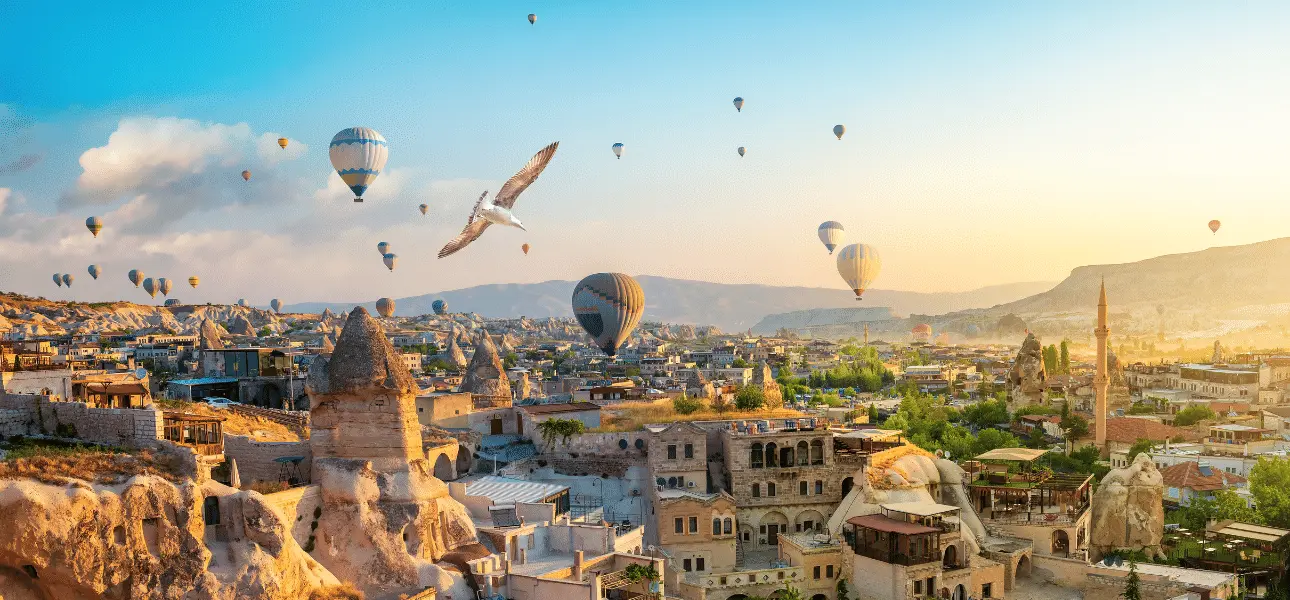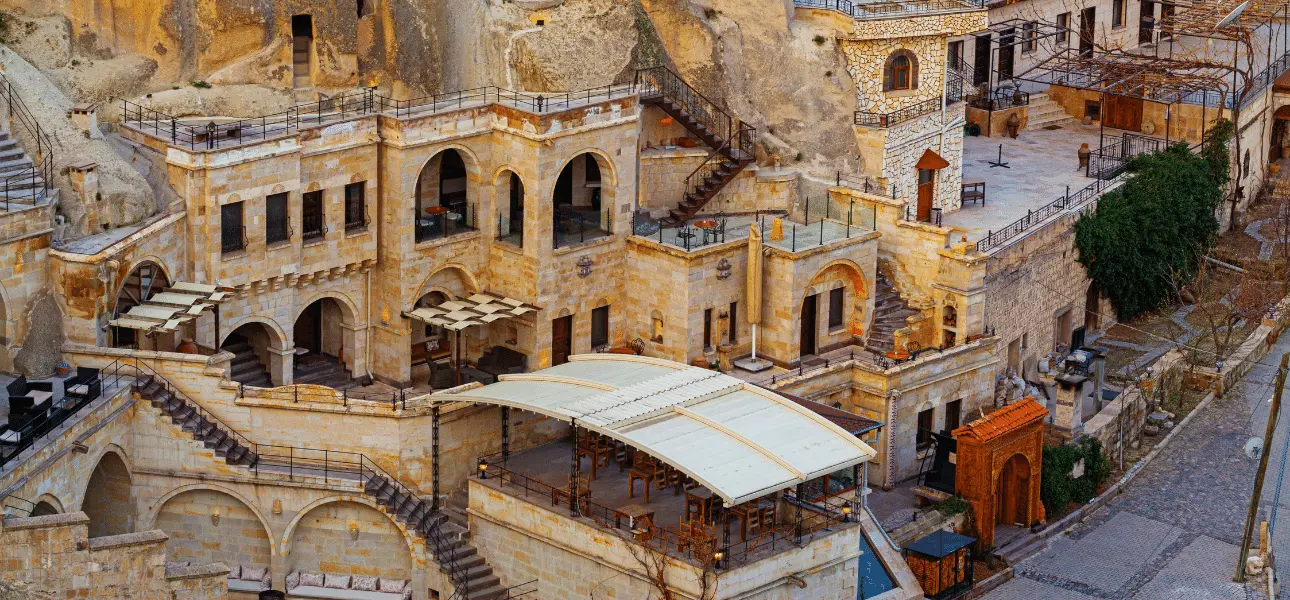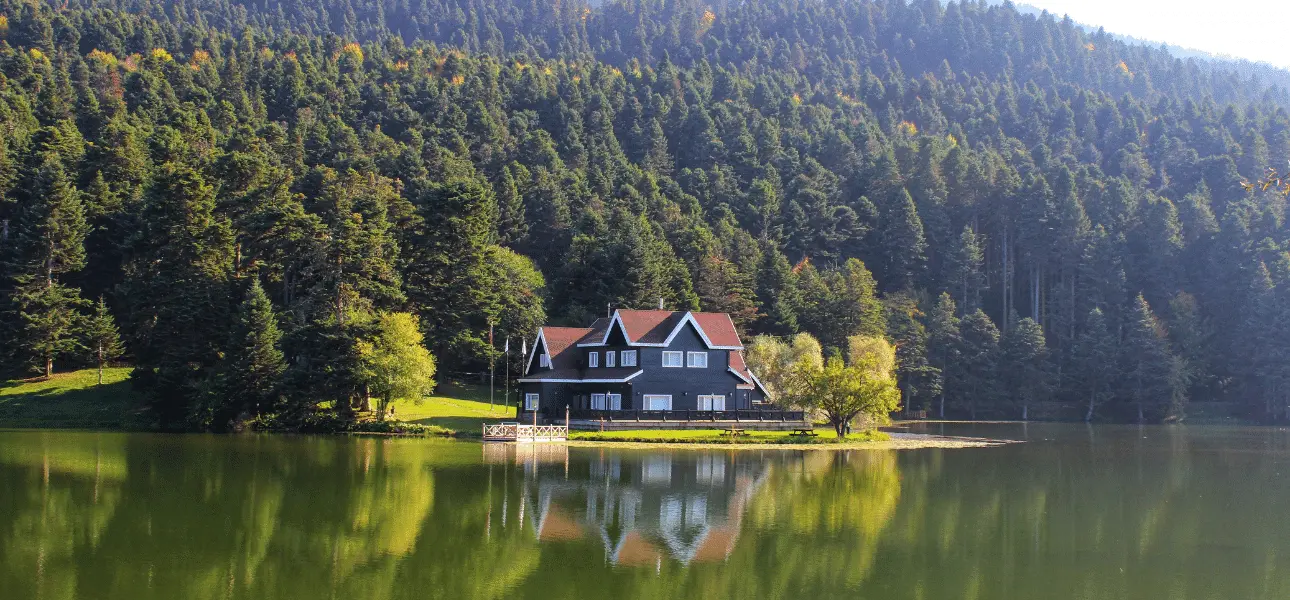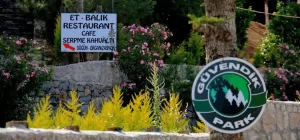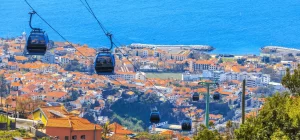Overview
Cappadocia is a region located in the Central Anatolia region of Turkey. Cappadocia, which takes its name from the geographical structure of the region, is famous for its natural beauties, historical and cultural heritage. The overview of Cappadocia includes many features that this unique region offers to visitors.
The history of Cappadocia dates back thousands of years. This region has hosted many civilizations throughout history. The history of Cappadocia has been influenced by many different cultures such as the Hittites, Persians, Romans, Byzantines and Ottomans. Therefore, the history of Cappadocia reflects a rich and diverse past.
The geological formation of Cappadocia is unique in the world. The formation process of Cappadocia took place millions of years ago under the influence of volcanic activity and erosion. Volcanic eruptions in the region resulted in the formation of fairy chimneys by the combination of lava and ash layers. These fairy chimneys are one of the most distinctive natural beauties of Cappadocia.
Those who travel to this region are amazed by the natural beauties of Cappadocia. In addition to the fairy chimneys, Cappadocia's plateaus, valleys and volcanic rock formations also offer fascinating views. Additionally, the underground cities and underground caves in the region are natural heritage worth exploring.
History of Cappadocia
Cappadocia is a unique geography located in the center of Turkey. It is famous for its history, thousands of years of cultural heritage and natural beauties. The history of Cappadocia extends from ancient times to the present day and bears the traces of many civilizations.
First, let's take a look at the history of Cappadocia. The name Cappadocia is a name dating back to the Hittite period and means "Land of Beautiful Horses". This region, B.C. It has been continuously inhabited since 3000 BC. It is famous for its houses, churches and underground cities carved into the rocks.
The history of Cappadocia is that it became an important settlement center during the Roman Empire. This region, where the Silk Road passed, became a point where trade boomed. It also became a place where early Christians could take shelter, and churches and monasteries were built.
One of the most important events in the history of Cappadocia begins with the formation of fairy chimneys called Fairy Chimneys. Fairy chimney is a natural wonder formed as a result of volcanic tuff layers formed as a result of volcanic eruptions being eroded by the effect of wind and water.
Cappadocians lived in underground cities carved into rocks and used these cities for defense purposes. The most famous of these underground cities is Derinkuyu Underground City. Derinkuyu Underground City is a complex consisting of approximately 18 layers and large enough to provide shelter for approximately 20,000 people.
Geological Formation
Cappadocia is one of the most remarkable natural formations of Turkey. The geological formation of this unique region emerged as a result of natural interactions lasting millions of years. The geological structure of Cappadocia is characterized by a volcanic rock called tuff. Tuff is a type of soft rock formed as a result of the rapid cooling and solidification of lava during volcanic eruptions.
The landscape of Cappadocia was formed as tuff layers were subjected to wind and water erosion over time. This erosion process has given rise to unique rock formations known as fairy chimneys. Fairy chimneys are cone-shaped rock blocks formed as a result of the upper parts of the tuff layers being more durable and the lower layers eroding faster.
The geological formation of Cappadocia also allowed the existence of underground cities and underground shelters. The softness of tuff layers made it possible for people to build living spaces underground. These underground cities are strategic points used by many civilizations throughout history for protection and hiding purposes.
Cappadocia, a geologically interesting region, offers a unique experience for tourists. Exploring this region of natural beauty takes people on a journey that takes people back hundreds of years.
Natural Beauty
Cappadocia is one of the most fascinating tourist regions of Turkey. This region, famous for its natural beauties, offers unique experiences to its visitors. It is impossible not to admire the natural beauties of Cappadocia. With its extraordinary fairy chimneys, impressive valleys and unique rock formations, Cappadocia is like a natural miracle.
One of the greatest natural beauties of Cappadocia is the fairy chimneys. These unique rock formations were formed by wind and water erosion. The formation of fairy chimneys took thousands of years and emerged as a result of the erosion of volcanic lava that created this fascinating landscape over time. The climatic conditions and geological structure of Cappadocia made the formation of fairy chimneys possible.
Cappadocia also has impressive valleys. You can walk in these valleys and take a stroll in nature in a peaceful atmosphere. The stone and cave structures in the valleys also reflect the historical and cultural heritage. Experiencing the historical and natural beauties of Cappadocia together offers an unforgettable travel experience.
Cultural Heritage
Cappadocia is one of Turkey's most fascinating and extraordinary destinations. This region also stands out with its historical and cultural heritage. Its cultural heritage is an important part of Cappadocia, which has been under the influence of various civilizations for centuries.
The cultural heritage of Cappadocia bears the traces of different civilizations. Different civilizations such as the Romans, Byzantines, Seljuks and Ottomans lived in this region and created the cultural richness of Cappadocia with the works they left behind. There is a close bond between the historical and cultural heritage of Cappadocia.
One of the most important cultural heritage items in this region are stone-carved churches. Cappadocia's underground cities and rock tombs also attract attention from visitors. These structures shed light on the religious and cultural past of Cappadocia. In addition, the museums and ruins in the region are an important part of the cultural heritage of Cappadocia.
Another remarkable cultural heritage item is the handicrafts of the region. Traditional handicrafts such as stonemasonry, ceramics and carpet weaving are the elements that make up the cultural heritage of Cappadocia. These handicrafts represent the knowledge passed down from past to present.
Thanks to its cultural heritage, Cappadocia has become a great center of attraction for both local and foreign tourists. Visitors to this region are immersed in the mystical atmosphere of Cappadocia by witnessing historical and cultural structures. Thanks to its cultural heritage, Cappadocia resembles an open-air museum that carries the traces of the past to the present.
Cappadocia's cultural heritage is one of Turkey's valuable cultural assets. It is a great responsibility to protect this heritage and pass it on to future generations. The cultural heritage of Cappadocia is on the UNESCO World Heritage List and attracts visitors from different parts of the world.

